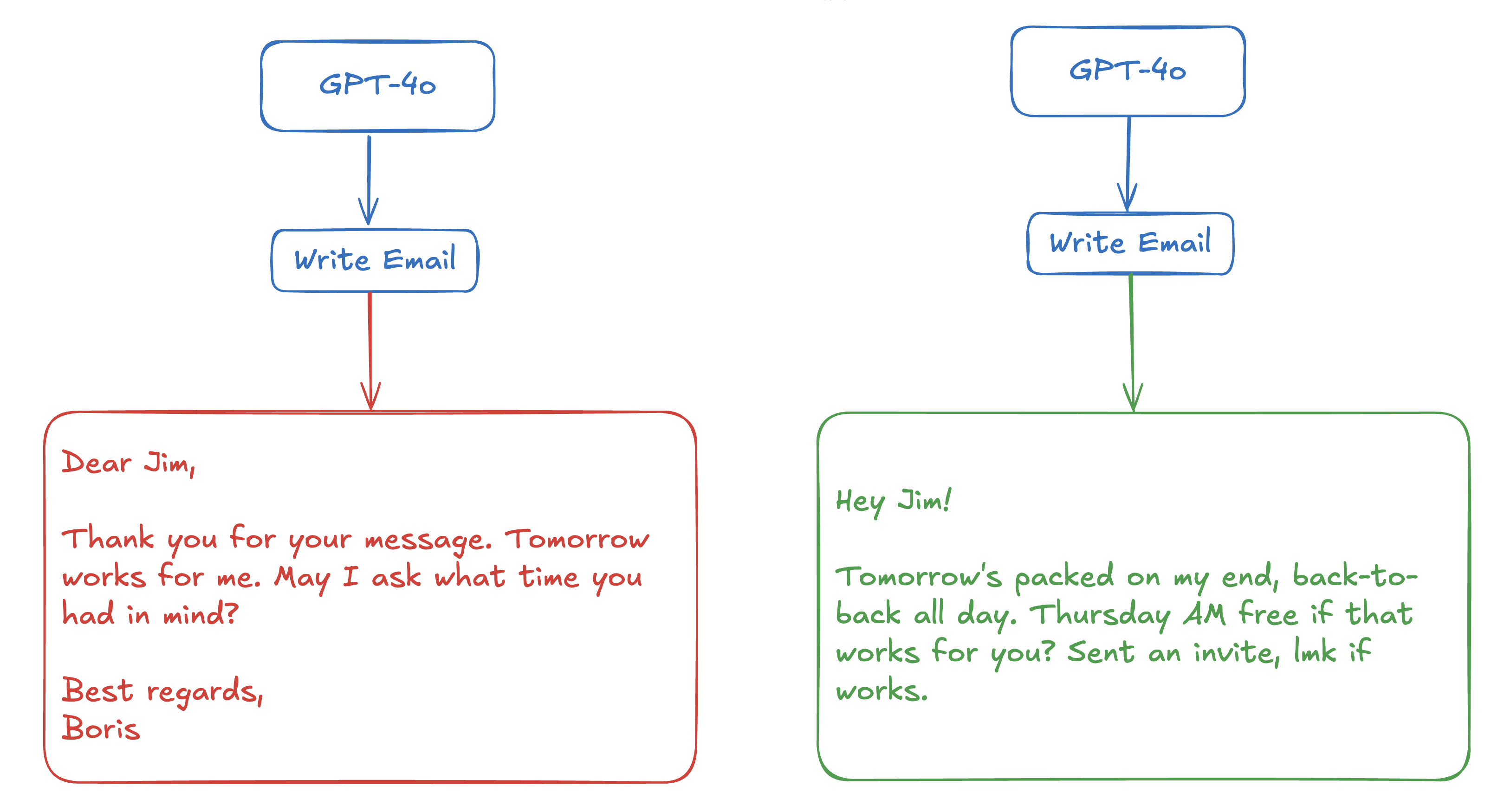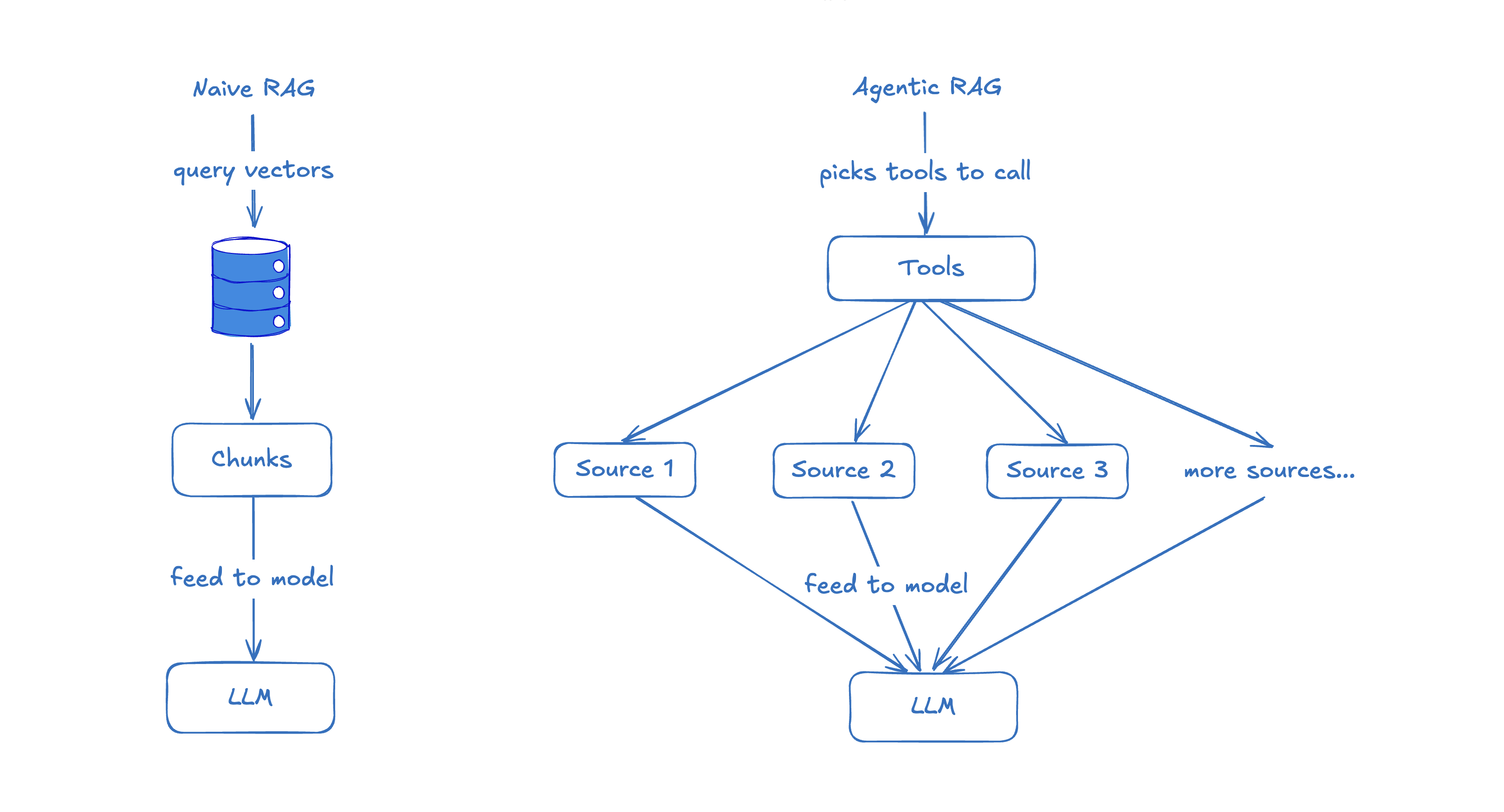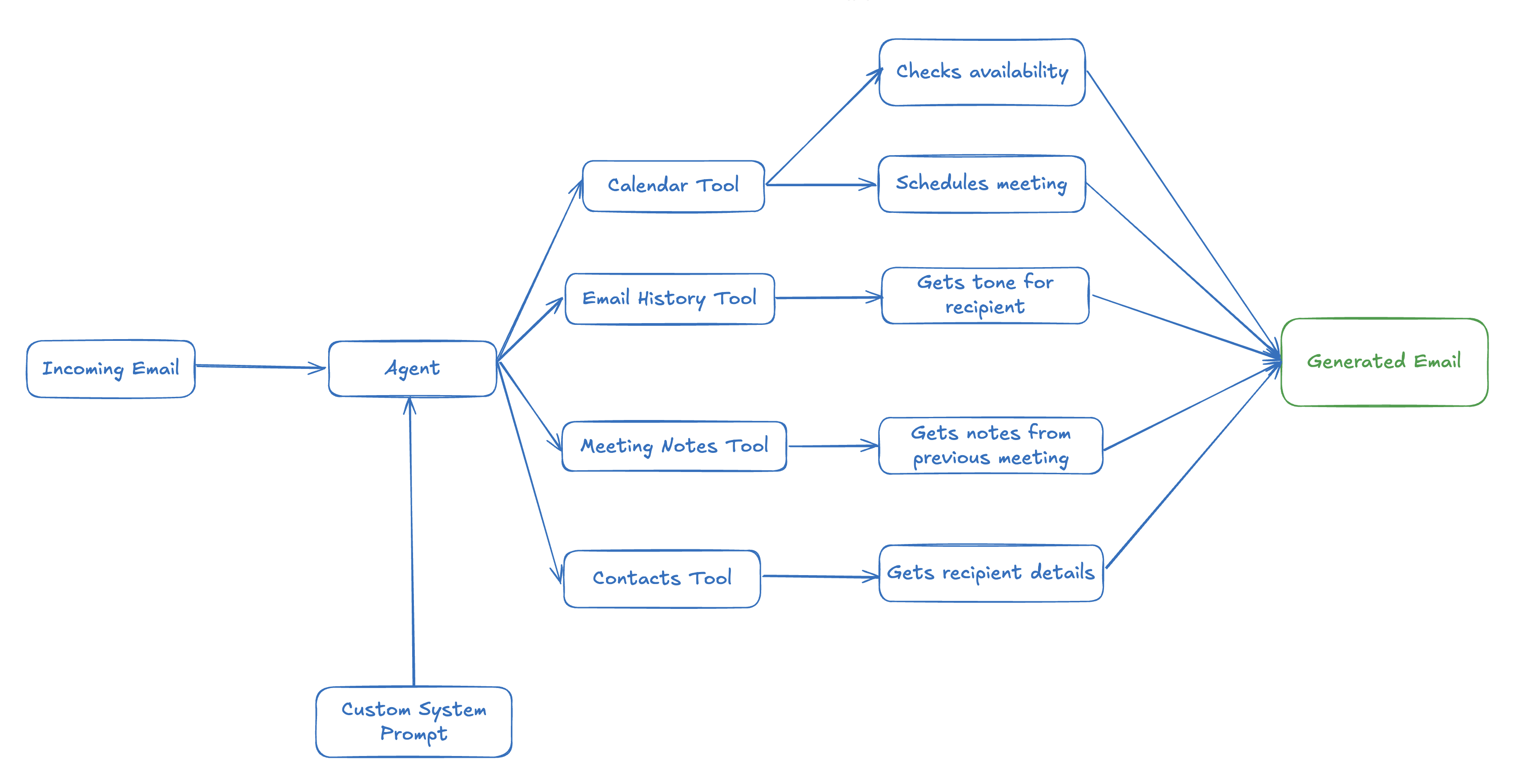译:Context engineering 是 AI 魔法的来源
原文: https://boristane.com/blog/context-engineering/
作者: Boris Tane
译者: Gemini 2.5 Pro
目录
Everyone’s busy tweaking prompts, swapping models, chaining tools. Yeah, models are getting better. Tools are getting fancier. But none of that matters if your context sucks.
大家都在忙着调 prompt,换模型,串联工具。没错,模型越来越好,工具越来越花哨。但如果你的 context 太烂,这一切都毫无意义。
Here’s the uncomfortable truth: the main thing that really matters when building AI agents is the quality of the context you give the model. Models are so good that most SOTA models can do most things with outstanding quality.
一个令人不舒服的事实是:在构建 AI agent 时,真正重要的只有一件事,那就是你提供给模型的 context 的质量。 现在的模型已经非常出色,大多数 SOTA 模型都能以极高的质量完成大部分任务。
Two products could be doing the exact same thing, but one feels magical and the other feels like a cheap demo. The difference? Context.
两个产品可能在做完全相同的事情,但一个感觉像有魔法,另一个则像个廉价的 demo。区别在哪?就在 Context。

同样的模型,同样的人物,不同的结果
什么是 context?
Context is everything the model sees before it produces tokens. It includes:
Context 是模型在生成 token 之前看到的一切。它包括:
- the system prompt (what you tell the model it is)
- the user message (what the user is asking)
- any external information, tools, or retrieved documents you stuff in before the call
- implicit context like who the user is, what they’ve done before, what they want right now, etc.
- system prompt(你告诉模型它是什么)
- user message(用户的提问)
- 在调用前塞给模型的任何外部信息、工具或检索到的文档
- 隐式 context,比如用户是谁、他们之前做过什么、他们现在想要什么等等。
The better this context, the better the model performs. Garbage in, garbage out, still true in 2025.
Context 越好,模型的表现就越好。“垃圾进,垃圾出” 这句老话,在 2025 年依然适用。
Context > 模型
Models are already better than most of us at most tasks. But most AI tools still underperform, not because the model is bad, but because we’re feeding it a half-baked view of the world.
在大多数任务上,模型已经比我们大多数人做得更好了。但大多数 AI 工具的表现依然不尽人意,不是因为模型不行,而是因为我们喂给它的是一个半生不熟的世界观。
Let’s look at RAG as an example.
我们以 RAG 为例。

从 Naive RAG 到 Agentic RAG
Naive RAG just dumps the top 3 chunks into the prompt and hopes for the best. Useful, sometimes. But the moment you move beyond toy examples, this starts to fall apart.
Naive RAG 只是把最相关的 3 个文档片段扔进 prompt,然后祈祷最好的结果。这有时有用。但一旦你超出了玩具级别的例子,这套方法就开始失灵了。
Agentic RAG, builds a contextual snapshot that includes data from multiple sources:
而 Agentic RAG 会构建一个情境快照,其中包含来自多个来源的数据:
- the question
- related documents
- source structure
- metadata
- and critically, the user’s intent and environment
- 问题本身
- 相关文档
- 源数据结构
- 元数据
- 以及至关重要的,用户的意图和环境
For example, a coding agent shouldn’t just embed source files and search them. It should know:
例如,一个编程 agent 不应该仅仅是嵌入并搜索代码文件。它应该知道:
- how to find and read any file in your repository
- which files were changed recently
- which files are open in your IDE
- what the LSP says about types and errors
- even what production logs and metrics say
- 如何在你的代码库中查找和读取任何文件
- 哪些文件最近被修改过
- 你的 IDE 中打开了哪些文件
- LSP (语言服务器协议) 提示了哪些类型和错误信息
- 甚至生产环境的日志和指标数据说了些什么
That’s context. And that’s the difference between “meh” and “wow”.
这就是 context。这就是“不过如此”和“惊为天人”之间的区别。
邮件示例:优质 context 的魔力
Let’s say you’re a CTO at a startup. You get an email:
假设你是一家创业公司的 CTO。你收到一封邮件:
Hey Boris, just checking if you’re around for a quick sync tomorrow. Would love to chat through a few ideas from our last call.
嘿 Boris,问一下你明天有没有空快速同步一下?想和你聊聊上次电话里提到的几个想法。
A decent AI email tool will reply like:
一个还不错的 AI 邮件工具会这样回复:
Dear Jim,
Thank you for your message. Tomorrow works for me. May I ask what time you had in mind?
Best regards,
Boris
亲爱的 Jim,
感谢您的来信。我明天有空。请问您想约在什么时间?
此致,
Boris
Who writes emails like this?
谁会这么写邮件啊?
A magical agent will do a few things first:
而一个有魔力的 agent 会先做几件事:
- check your calendar: you’re in back-to-back calls all day.
- look at previous emails to this person: you’re friendly, informal.
- scan recent meeting notes: this person is pitching a joint partnership.
- pull in your contact list: they’re a senior PM at a partner org.
- apply your system prompt customisation: “be concise, decisive, warm”
- 检查你的日历:你一整天都排满了会。
- 查看你和这个人的过往邮件:你们的沟通风格是友好、非正式的。
- 浏览最近的会议纪要:这个人正在提议一个合作项目。
- 调取你的联系人列表:他们是合作伙伴公司的一位高级产品经理。
- 应用你的 system prompt 定制化指令:“简洁、果断、热情”。
And finally generate and autonomously send an email that actually is helpful:
最后,它会生成并自动发送一封真正有用的邮件:
Hey Jim! Tomorrow’s packed on my end, back-to-back all day. Thursday AM free if that works for you? Sent an invite, lmk if works.
嘿 Jim!我明天日程排满了,一个会接一个。周四上午有空,你看行吗?我发了个日历邀请,如果时间可以麻烦确认下。
That’s magic. Not because the model is smarter, but because the context is richer.
这就是魔法。不是因为模型更聪明,而是因为 context 更丰富。

在生成 token 前构建 context
像做产品一样构建 context
You wouldn’t build a product without thinking deeply about state, user intent, and interaction history. So why treat your AI agent like a stateless chatbot?
你不会在不深入思考状态、用户意图和交互历史的情况下就去构建一个产品。那么,为什么要把你的 AI agent 当成一个无状态的聊天机器人呢?
Context engineering is the new prompt engineering.
Context engineering 就是新的 prompt engineering。
It means:
它意味着:
- Designing the right structure and format for context
- Knowing what context actually helps the model perform
- Building pipelines to fetch, transform and deliver this context at runtime
- Constantly improving context quality with feedback loops
- 为 context 设计正确的结构和格式
- 知道什么样的 context 才能真正帮助模型提升表现
- 构建在运行时获取、转换和交付这种 context 的 pipeline
- 通过反馈循环不断提升 context 的质量
总结一下 (TL;DR)
- Models are great.
- But context is king.
- Context is the difference between a dumb assistant and a superpowered teammate.
- Build your agents like you build your products: obsess over what they know, when they know it, and how they use it.
- 模型很棒。
- 但 context 为王。
- Context 是一个愚蠢的助手和一个超能队友之间的区别。
- 像打造产品一样打造你的 agent:去琢磨它知道什么,什么时候知道,以及如何使用这些信息。
If your agent isn’t magical yet, don’t swap the model, fix your context.
如果你的 agent 还不够神奇,别急着换模型,先去优化你的 context。